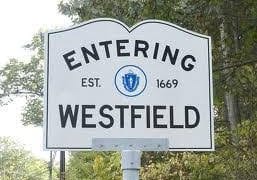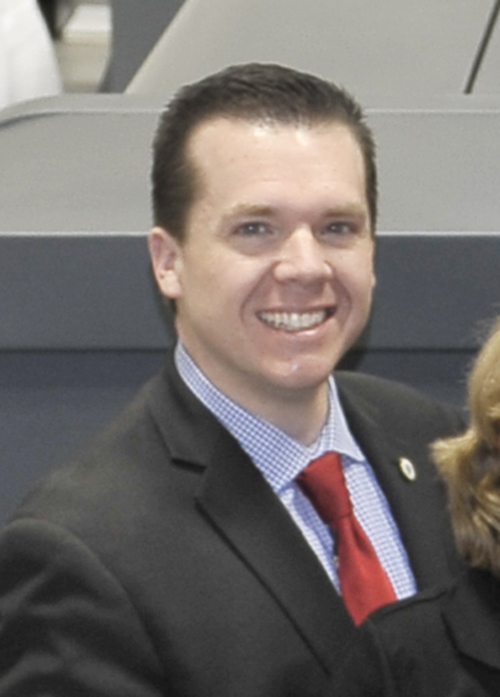WESTFIELD – The City Council members voted on three separate issues that will determine the tax rates for residential, commercial, industrial and personal property owners, although none of those decisions came without significant debate and none were unanimous.
The Council adopted the same residential shift as last year, 1.63, which will result in increases for all classes of property, although those increases will be buffered by the use of stabilization funds to reduce the tax obligation based on the 2013 budget.
The shift has greater impact on tax rates for Commercial, Industrial and Personal (CIP) property because it is spread across those classes which only comprise 17 percent of the total property valuation in the city, while residential property is 83 percent, which spreads the tax levy across a much larger segment.
The council had initiated the tax shift hearing last Wednesday, Nov. 28, and continued that hearing to Thursday night, deferring any action until the hearing was closed.
During that hearing, the Chamber of Commerce, through a number of speakers, urged the council to adopt a shift of 1.60, a drop from the shift of 1.63 used to set the tax rate last year. That shift would continue a “business-friendly trend” that would shift more of the tax burden to residential property owners.
Those speakers asked the council members to “send a message” to the business community and create more incentives for businesses to locate, or stay and expand, in the city, creating jobs and bringing revenue into the city.
Former Mayor Michael O’Connell, seeking a shift that favored residents, spoke to the approach that if it isn’t broke, don’t fix it.
“We’ve had a split rate for 30 year that has not harmed business and industrial growth or job growth,” O’Connell said. “It’s worked for 30 years and will continue to work for the next 30 years. The mere fact that residents are not here does not mean they agree to shift the burden onto them.”
Council President Christopher Keefe closed the hearing and initiated the discussion of the residential factor, but At-large C0uncilor Brian Sullivan requested that the board first address the actual levy increase.
“We should vote on the levy increase of either 2 1/2 percent or 1 1/2 percent before we vote on the shift,” Sullivan said.
The 2013 budget was based on a full levy of 2 1/2 percent, as allowed under Proposition 2 1/2, which was the number used last week when the residential shift was initially discussed.
However, Keefe and Ward 5 Councilor Richard E. Onofrey Jr., chairman of the Finance Committee, both petitioned Mayor Daniel M. Knapik to submit a levy of 1 1/2 percent and to use $1,316,892 of the city’s stabilization funds to bridge the gap between the budget and revenue.
Several councilors opposed the use of stabilization funds for a number of different reasons.
At-large Councilor David A Flaherty argued that the city has future liabilities for post-employment benefits, pensions, health insurance, as well as general bond debt that amounts to $350 million and that it cannot afford to leave any revenue on the table.
“To talk about giving back money when we are so much in debt is reckless,” Flaherty said. “We have a huge debt that we’re passing on to our kids and grandkids.”
Flaherty argued that the city needs to reduce spending, especially labor contracts which have “put us in this position.”
“Raise taxes to put something toward that huge debt,” he said.
At-large Councilor Brent B. Bean II also opposed using stabilization funds to balance the budget.
“How much do we take out of our savings account?” Bean questioned. “I agree with Councilor Flaherty that this is important to the city. I’m in favor of 2 1/2 percent and in favor of shifting to 1.60.”
At-large Councilor James R. Adams countered that argument, stating that every community in the state is dealing with the issue of huge financial obligations generated by post-employment benefits, pensions, and retiree health care.
“What I’m concerned about are businesses and residents,” Adams said. “We need to help everyone we can help” through a 1 1/2 percent levy.
Onofrey then made a motion to act on the stabilization funding and the levy, which led to Flaherty calling for a point of order because he objected to acting under a suspension of council rules for immediate action on the $1.3 million stabilization appropriation request. One dissenting councilor could prevent the vote under the council rules.
Keefe called a recess to discuss the impact of delaying a decision.
Keefe said the Council had to act to avoid the need to borrow money for the first quarter of the 2013 calendar year.
“The Department of Revenue will not allow us to send out estimated bills because we screwed up,” Keefe said. “Tax bills will not be due until May 1, 2013, meaning the city will have to borrow money, about $15 million, at a cost of $100,000,” he said.
Onofrey said that either levy under consideration, 1 1/2 or 2 1/2 percent increase, will require the use of some stabilization funds.
“If anybody objects (to immediate consideration of the stabilization appropriation) it will cost the city more than six figures,” Onofrey said. “Think about your priorities, if you want to cost the city money, object, if you want to do the right thing, don’t object.”
The council voted to approve the 1 1/2 levy by a narrow 7-5 margin, then moved to the stabilization appropriation which was approved by 11-1 before moving on to the residential shift.
The Finance Committee recommended a shift 0f 1.63. Councilor Adams made a motion to amend the shift to 1.61, followed by a motion by Ward 3 Councilor Ann Callahan to amend the committee’s motion to 1.62.
Callahan’s motion resulted in a deadlocked vote of 6-6. The councilor then voted on a motion to reconsider that 1.62 shift, but that vote also failed on a 6-6 vote.
Adams’ motion to amend the shift to 1.61 was then put on the floor, and failed, again by a 6-6 vote.
The council approved the 1.63 shift by a 7-5 vote.
To watch the city council meeting, click here.






